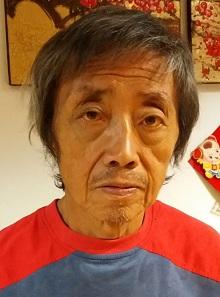LCQ5: Poor population with high academic qualifications
Following is a question by the Hon Jimmy Ng and a written reply by the Chief Secretary for Administration, Mr Matthew Cheung Kin-chung, in the Legislative Council today (May 9):
Question:
It has been reported that the number of working poor with post-secondary education or above (high academic qualifications) increased from 18 400 in 2012 to 28 300 in 2016, of which the number of university degree holders increased by 83 per cent from 9 300 to 17 000. There are comments that while education has all along been regarded as a major impetus for upward mobility, the above figures manifest a worrying situation that even high academic qualifications cannot help one get out of poverty. In this connection, will the Government inform this Council:
(1) whether it has studied the causes for the rise in recent years in the number of working poor with high academic qualifications; if so, of the details; if not, the reasons for that;
(2) whether it has estimated how the number of working poor with high academic qualifications by the end of 2022 as well as their age and gender profiles compare with the current relevant figures;
(3) as there are views that the increase in the poor population with high academic qualifications is mainly attributable to (i) the increasing industrialisation of education, (ii) the mismatch between the supply of talents from the education system and the manpower demand in the labour market, and (iii) the narrow industry structure in Hong Kong, whether the authorities have studied the specific impact of these three factors on the poor population with high academic qualifications; if so, of the details; if not, the reasons for that; and
(4) given that some research results have found that the median starting salary of university graduates dropped from $16,371 per month in 1995 to $13,916 per month in 2015, coupled with the fact that the local Composite Consumer Price Index rose by 37 per cent from 73.3 (with October 2014 to September 2015 as the base period) to 100.6 during the same period, reflecting that the income levels of university graduates had deteriorated during the period, whether the authorities will introduce more measures appropriate for alleviating and preventing poverty among the working poor who are university graduates; if so, of the details; if not, the reasons for that?
Reply:
President,
The Commission on Poverty announced the first official poverty line in 2013. It agreed to adopt the concept of "relative poverty", setting the poverty line at 50 per cent of the median monthly household income before policy intervention (i.e. before taxation and social welfare transfers) by household size. Households with income below the poverty line are classified as poor while the household members concerned are counted as poor persons. Under this definition, the employed persons with post-secondary education in poor households (i.e. poor employed persons with post-secondary education) can be considered as the working poor with "high academic qualifications". According to the latest poverty situation report, the number of poor employed persons with post-secondary education reached 28 300 in 2016.
Our reply to the Hon Jimmy Ng's question is as follows:
(1) According to the analysis of poverty situation conducted by the Government, after recurrent cash intervention, the number of poor employed persons with post-secondary education increased from 18 400 in 2012 to 28 300 in 2016. Despite the increase in the number of employed persons with post-secondary education in poor households in Hong Kong, the post-intervention (recurrent cash) poverty rate of employed persons with post-secondary education stayed at the low level of 2 per cent, much lower than the overall figure of 14.7 per cent. Furthermore, the poverty rate among working degree holders was even lower at 1.6 per cent.
Among the some newly added 10 000 poor employed persons with post-secondary education between 2012 and 2016, about 5 600 were part-time workers. This trend is in tandem with a general rise in part-time employment in the labour market in recent years. A close examination of the 5 600 additional poor part-time employed persons with post-secondary education shows that a majority of them were youths aged 18 to 24 (3 300 persons) and over 80 per cent of this group were students. Among all the above-mentioned additional part-timers, most (4 800 persons) lived with non-working members or another full-time working member who had lower educational attainment.
Apart from the increase in poor part-timers, the number of full-time poor workers with post-secondary education also rose by about 4 300 persons between 2012 and 2016. Over 70 per cent of these additional full-time poor workers were the sole breadwinner of the households which were generally families of three to four persons. The relatively heavier financial burden has made it difficult for them to move out of poverty.
(2) Based on the statistics sourced from the General Household Survey regularly conducted by the Census and Statistics Department, the poverty line analysis is updated annually to reflect the actual situation of poor households in the previous year. The analysis also helps the Government monitor the effectiveness of relevant policy initiatives as well as the changes and trends of the poverty situation of different household groups. The Government has not made any projections of the poverty situation.
(3) The poverty situation in Hong Kong is affected by the overall economic, demographic and labour market situations. Under the current analysis of the poverty situation, the Government examines the poverty situation mainly from macro perspectives and further analyses different household groups by a set of socio-economic characteristics. Changes in the people's education attainment and industry structure as well as relevant impact have formed part of the overall economic statistics and have been taken into account under the existing analytical framework. There is no further study on individual factors under the current analytical framework of the poverty line.
(4) The Government has put in place different initiatives to provide support for the working poor. In May 2016, the Government introduced the Low-income Working Family Allowance Scheme (the Scheme) to provide financial support to eligible working families who are not receiving Comprehensive Social Security Assistance. One of the Scheme's objectives is to encourage self-reliance through continuous employment. In order to strengthen the relevant support and the Scheme's functions in alleviating and preventing poverty, the Government implemented a series of enhancements on April 1, 2018, which include extending the Scheme to cover singleton households, allowing household members to aggregate their working hours, relaxing the income requirements and increasing the rates of allowances, etc. The Scheme was also renamed the Working Family Allowance Scheme on the same day.
In addition, to alleviate the financial burden of student loan borrowers, the Government introduced enhancements to the student financial assistance schemes in 2012. These included reducing the respective interest rates of the means-tested loan schemes and non-means-tested loan schemes and extending the standard repayment period. Loan borrowers who have difficulty in repaying their loans may apply for a deferral of loan repayment. If their deferral applications are approved, a maximum of two years' interest-free extension of the loan repayment period is allowed. To ease the financial burden of loan borrowers upon graduation and to allow them more time to seek a stable job, loan borrowers are also given the option of starting the student loan repayment one year upon completion of their studies.

